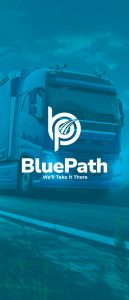-
22
Sep
Why Use BluePath Logistics?
Background and The Opportunity
1. The Caribbean’s leading retailers, grocery store chains, manufacturers, and e-commerce companies all have one thing in common. They all depend on truck drivers who can deliver cargo across the region—cost-effectively, efficiently, and reliably.
2. But high logistics costs, a problem throughout the region, often make that difficult. Prohibitive shipping fees are exacerbated by additional challenges plaguing inter island transport: an informal marketplace where drivers are rarely paid in a transparent or timely manner, and a lack of technical innovation that has stymied progress. As a result, economic development and productivity have suffered.
3. Reducing shipping expenses is critical, where logistics can make up 15 percent of a product’s cost.
4. Retailers across the region are moving to retool their online sales platforms as foot-traffic has evaporated under strict lockdowns in response to the Covid-19 pandemic.
5. Since the crisis started retailer’s sales essentially went to zero in a couple of days and then they needed to scale up very quickly when they started doing on-line sales.
Our business model is ideal to respond to these rapid shifts.
6. This quick shift to online platforms has upended the supply networks of some of the region’s largest retailers and forced them to be more agile as they ramp up their online sales, which are now their main lifeline under the economic maelstrom that has shut down their stores, according to business associations.
7. The pandemic forced many retailers to invest more in their online sales platforms, which could help prop up e-commerce in the region for years to come.
8. There are some industries that are in desperate need of trucks like the food sector and pharmaceuticals right now.
9. The logistics sector’s lack of technological changes — and shipping fees that are much pricier than in other regions – remains a persistent bottleneck that hinders trade and the growth of the private sector, experts say. The disruptions created by the Covid-19 pandemic have brought this into sharper focus as retailers move to supply a population that is largely now under lockdown and foot-traffic has evaporated.
BluePath Logistics:
 10. BluePath Logistics is an application that connects truck drivers to businesses that need cargo delivered, deploying a model similar to that of a ride-hailing app—but adapted to trucks and other commercial vehicles, helping companies decrease shipping costs by around 25 percent, helping drivers find work more easily than before, receive payment promptly, and obtain advances for key expenses.
10. BluePath Logistics is an application that connects truck drivers to businesses that need cargo delivered, deploying a model similar to that of a ride-hailing app—but adapted to trucks and other commercial vehicles, helping companies decrease shipping costs by around 25 percent, helping drivers find work more easily than before, receive payment promptly, and obtain advances for key expenses.11. With a technological platform that connects truck drivers with companies that need cargo, BluePath is helping customers that range from furniture outlets to fresh-produce stores revamp their supply chains to meet the real-time demands of on-line sales.
12. Aims to improve business and retail operations where the lack of technology in the logistics sector hampers commerce and limits the flow of goods and services. Reducing shipping expenses is especially critical for countries in the region—where logistics can account for as much as 15 percent of a product’s cost.
13. Is equally focused on improving the lives and livelihoods of its drivers, who traditionally have scant job security. It is reported that more than 70 percent of truck drivers are independent and rely on third-party transportation brokers to connect them with clients. This system lacks pricing transparency, with high rate fluctuations even for the same routes, and layers of middlemen who share fees. Inefficiencies result in an underutilization of trucks, which on average are empty 50 percent of the time. Since drivers aren’t paid unless they are carrying cargo, job security is low—and predictably, turnover among drivers is high.
14. Reduce “driver churn” through incentives such as discounts on tires and advances for gas purchase. (Fuel often represents the bulk of costs for drivers, and price fluctuations can put a strain on working capital.) Drivers also have access to in-app tools and receive alerts on prohibited loading zones, preventing unnecessary fines. The company is developing a list of best driving practices, which will help professionalize truck drivers.
15. Drivers will have a banking account and benefit from access to digital banking products through partnerships being developed with private commercial banks. This will bring these employees into the formal economy, where they will be able to access credit.
16. By illustrating the commercial viability of an asset-light logistics platform, this is expected to help bring down market-wide logistics costs, which has the potential to spur a sector-wide improvement of technological capabilities, or traditional companies will risk losing market share.
17. The company has been providing face masks, gloves, and hand sanitizers to the drivers and training them on all the necessary preventive measures such as immediately showering and changing clothes after arriving home from work.
18. Improvements like these will resonate throughout the region, where roads are the main mode of cargo transportation.
